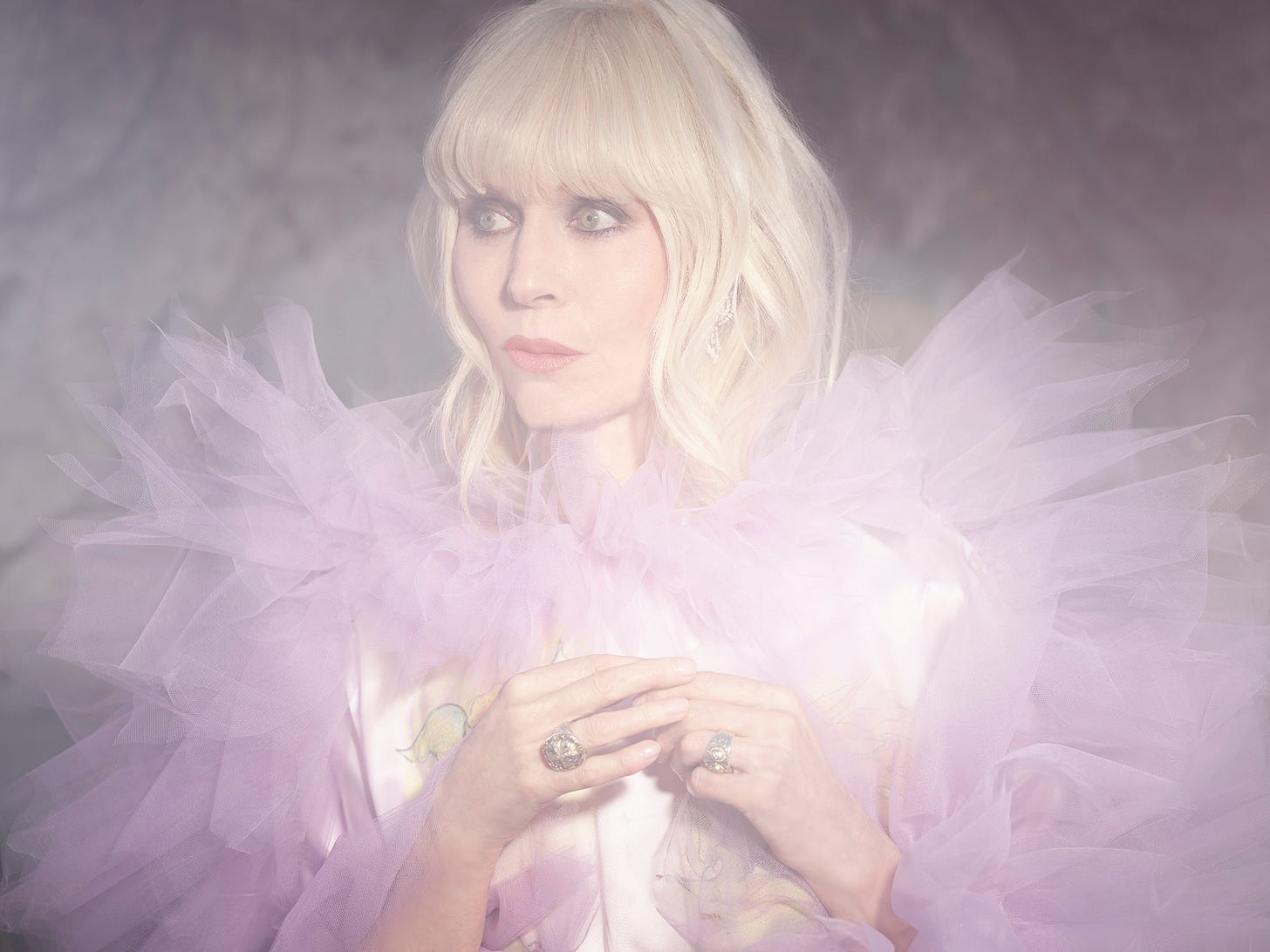Fashioning a Legacy: Christine Suppes’ Devotion to Haute Couture
Conversation with a Visionary Collector and Patron of the Arts
Happy Pride Month! It’s my pleasure to feature fashion pioneer and Bay Area native Christine Suppes on this month’s issue. Christine and I met during San Francisco’s Academy of Art University fashion show some years ago, when Fafafoom.com was a fashion blog. The concept of personalization in fashion connects us; my DIY fashion curiosities and Christine’s patronage to couture houses.
In this issue, we talked about collecting high fashion, the (currently on view) Fashioning San Francisco: a Century of Style exhibition at de Young Museum, for which Christine is a major supporter, and the future of fashion collectors. Enjoy!
First, let me introduce Christine Suppes to you. She is an iconic fashion figure, a Bay Area pioneer of online fashion editorial publications, way before the rise of e-magazines. Her Fashionlines.com (1999 - 2007) offered fashion news, Parisian haute couture reviews, and original artworks. Back then, she needed to print her articles for fashion houses, most of whom didn’t know how to access her online articles.
Along the way, Christine started collecting haute couture and collector ready-to-wear ensembles. On Electric Fashion (Skira, 2015), - her first book with photographer Frederic Aranda, FRSP (Fellow of the Royal Society of Photographers) - you can enjoy pictures of garments she has collected for over 30 years.
Seeing photos of Christine modeling her own pieces set in various international fashion capitals in the span of 5 years is magical, and it makes the pieces come alive - the relationship between the garments and their lover, the collector, is brilliantly captured by Frederic Aranda’s photos and Christine’s texts. To this date, it’s a fashion book like no other.
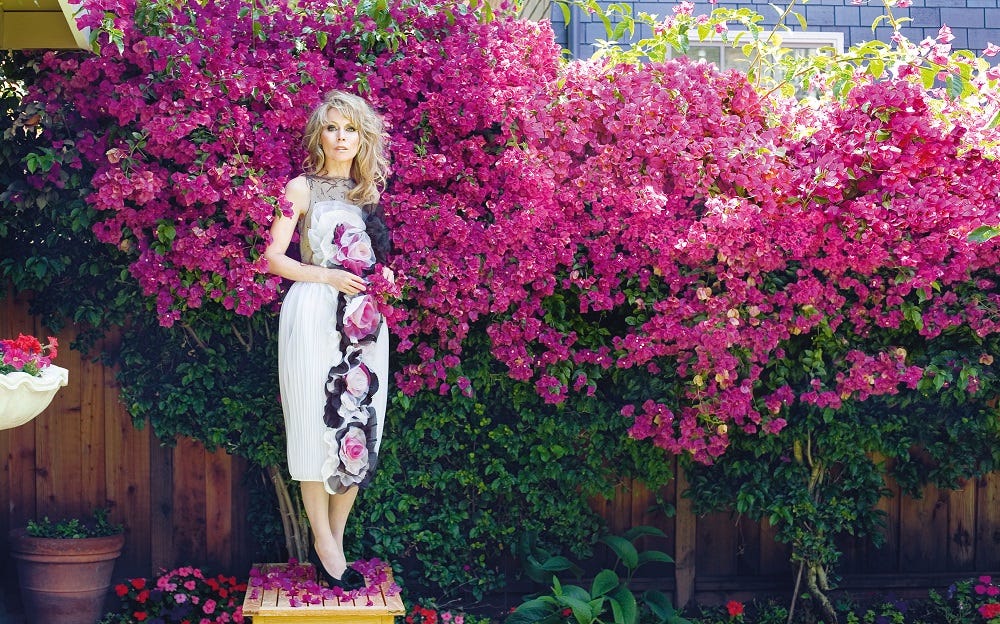
In 2018, Christine donated more than 500 ensembles to the de Young Museum, San Francisco. This stunning act of generosity set the foundation for the Fashioning San Francisco: A Century of Style exhibition, currently on view until August 11, 2024. She has always intended to pass her collection to a museum for the greater public to enjoy.
From her involvement in fashion exhibitions in museums across the USA and Europe, support of fashion upcycling through St. Vincent de Paul Society Discarded to Divine initiative, to her support of fashion houses (most notably Rodarte and on aura tout vu), her support and patronage to the art of fashion has resonated far and wide. And I’m really proud to share our conversation with you all!
Collecting Fashion
Mira Musank (Mira): Christine, thank you so much for agreeing to be featured in my newsletter. It’s an honor and privilege to have your voice be part of my humble publication, and I hope the readers will find great insights from your experience.
First, I’d love our readers to learn more about your journey as a collector that has spanned over 30 years. Could you share how your passion for haute couture began and what has kept that passion alive over the decades? And when you're considering acquiring a new couture piece, what specific elements or qualities catch your eye and resonate with you on a deeper level?
Christine Suppes (Christine): Here we have three distinct questions. First, how did my passion for couture begin? As a little girl of three to five I was mesmerized by Walt Disney Presents on television. I was watching in black and white (it was the 1950s) things which should have been shown in color, like fireworks, and the iconic Disney animation.

I was drawn to this aesthetic, and when I think of the Junon dress by Dior (1949), which is probably my favorite dress in the world, I think this is what I was feeling when I saw the Disney fireworks in ombre black, gray and white. This, and the lace petticoats I wore under my dresses that were my favorite garments as a little girl, which I realize now was an early Lacroix impulse; these were the beginnings.
What has kept my passion for couture alive all these years is to discover clothes that bring back the Disney feeling. This is perhaps the deeper level to which I consciously or unconsciously return when looking at new pieces.

Mira: During our most recent meeting, I was fascinated when you briefly shared the process of developing relationships with designers and working together to agree on a specific design before it’s made into reality. Could you expand on this collaborative approach and how it aligns with the principles of sustainability in the fashion industry?
Christine: I have just received a chiffon gown from on aura tout vu, on which flowers from my garden have been printed from photos the designers collected from emails and my social media. I didn’t give Livi and Yass set guidelines as we have worked together for 25 years. Of course, this is more efficient and sustainable than working through the chain of command from store to designer back to store before reaching the client.
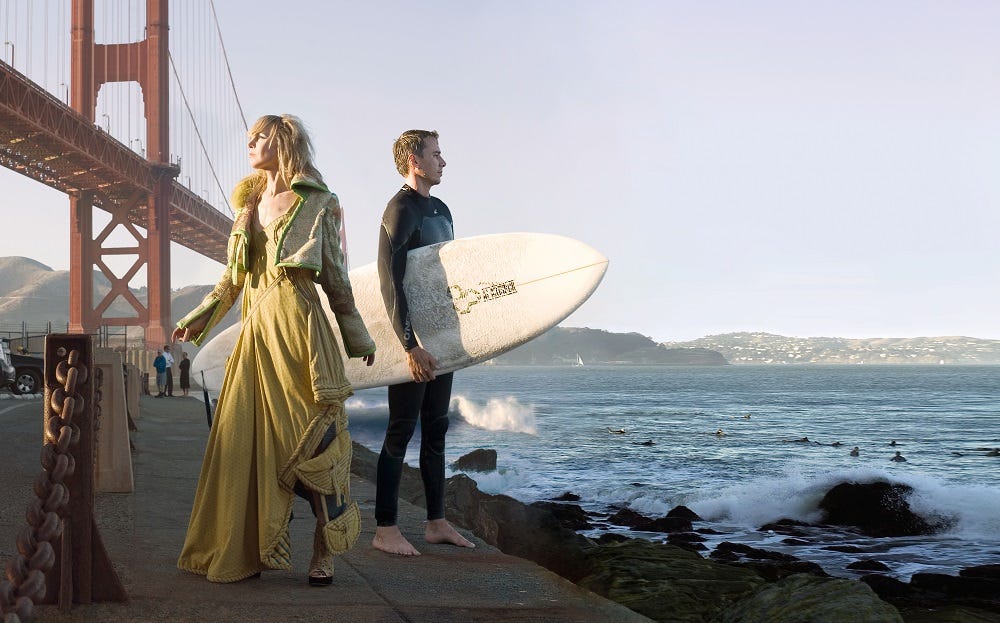
Mira: You've expressed a deep attachment to the Azzedine Alaïa pieces in your collection, stating that you'll never part with them. Could you share what makes Alaïa's work so special and significant to you?
Christine: I met Azzedine in 2005 when he received an honorary doctorate from Academy of Art University in San Francisco, and expressed to him that I was a great admirer of his work but found I could not wear his ready to wear clothes because they were too tight for me.
I think I was not the only woman to tell him this because in the next few years, his company began to manufacture gorgeous knit pieces in styles with more ease. I found the simplicity and sophistication of the line, the palette and ease irresistible. The Alaïa knit is hauntingly reminiscent of perhaps light and shadow in his home country of Tunisia, at any rate, deeply personal, which is what couture is all about.
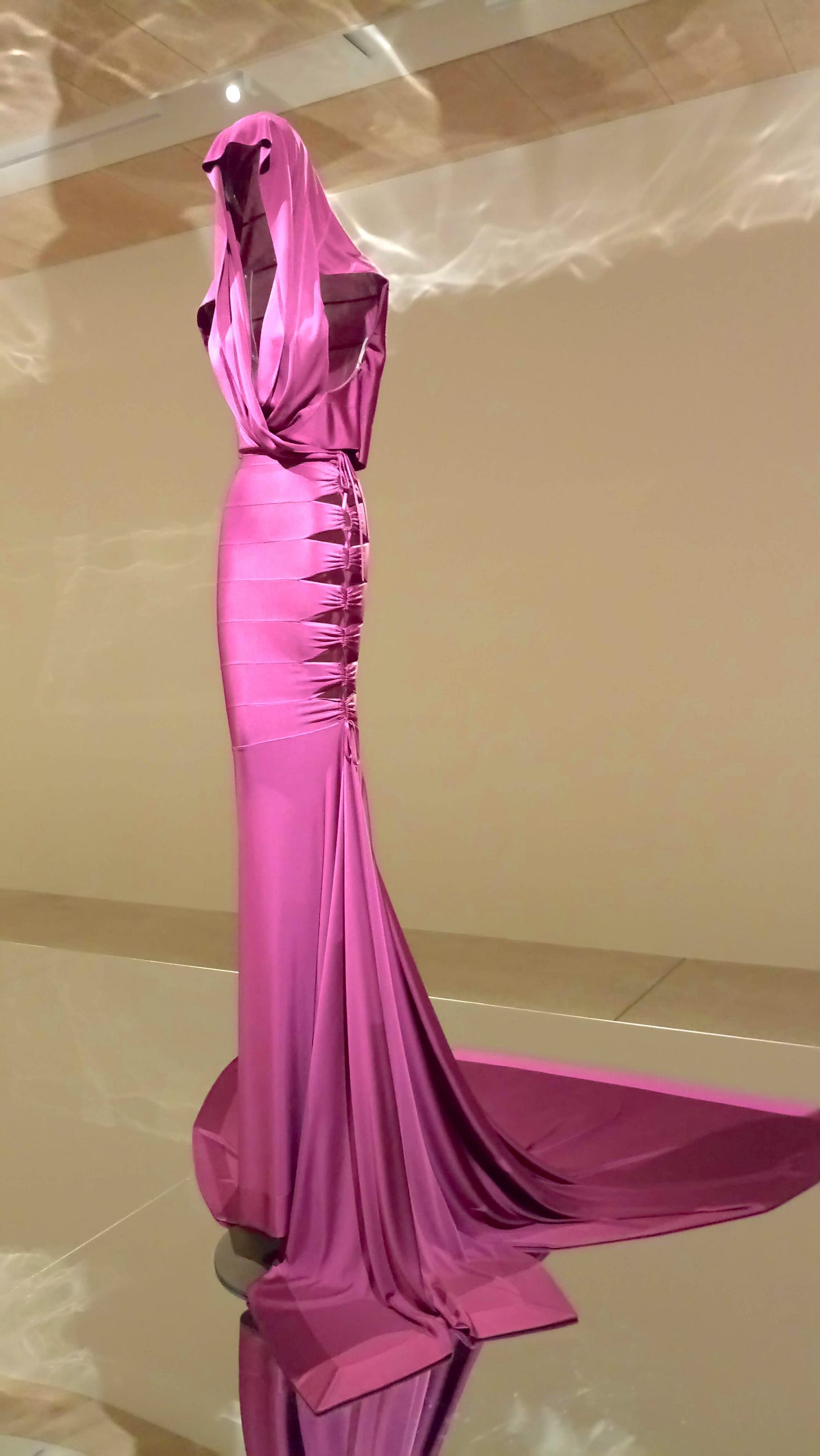
Fashioning San Francisco Exhibition
Mira: As someone who has been involved in prestigious fashion exhibitions like Fashioning San Francisco at the de Young Museum (San Francisco, CA) and the Rodarte Retrospective at the National Museum of Women in the Arts (Washington, DC), could you share your insights on the curatorial process for such events? What goes into curating a comprehensive and cohesive exhibition that effectively showcases haute couture pieces?
Christine: Although I was not the curator for either show I had a hand in selecting the curator for both. I think we took into consideration the work which was most important to the designers, for instance, in Fashioning San Francisco, I pretty much insisted that the 1994 Galliano black bias gown, the 1996 McQueen trouser suit and 2010 red silk cocktail dress be in the exhibition.
The 1994 gown was one from Galliano’s collection that catapulted him into the limelight, and the 1996 McQueen was from his Dante collection which put him onto the world stage as well. And the 2010 dress was from McQueen’s last collection.

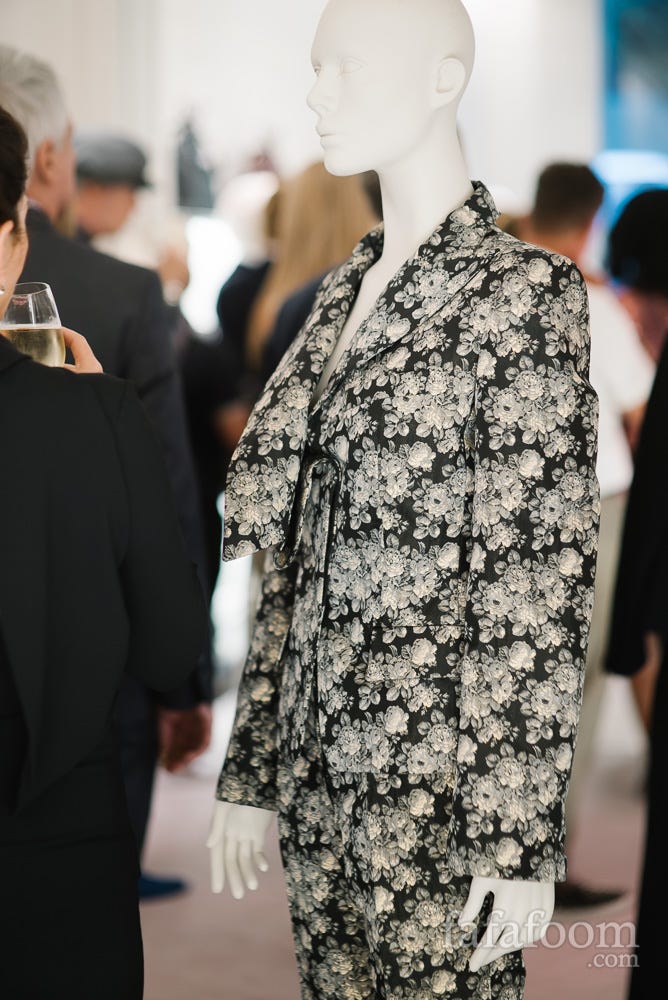

I think it’s important to give historical context to the exhibitions. Other things go into curating a show like these as well, obviously, and with Rodarte I could point to their Star Wars collection, their Lost Girls of Juarez collection or their Santa Cruz collection, all major collections highlighting major cultural or contemporary themes, and say, “Put examples from each into the show.”
Mira: It's interesting to note that all the donors for the Fashioning San Francisco exhibition come from the Peninsula and South Bay regions. What do you think contributes to the concentration of haute couture collectors in these specific areas? Do you believe there are certain cultural or socioeconomic factors that have fostered a community of passionate collectors in these neighborhoods?
Christine: Traditionally, the Peninsula and specifically Hillsborough, Atherton and Woodside were enclaves of wealth and privilege. If you look at the freeway patterns in the Bay Area, the flow from 280 and 101 are the easiest drives into the city. To get into San Francisco from Hillsborough for lunch and some shopping is a simple drive of about 20 to 25 minutes.
Ladies would go into Union Square either with their drivers or park in the Union Square Garage, spend the morning at I. Magnin selecting their clothes or having their fittings, and then lunch at the Town and Country Club, the Francisca Club, or the Metropolitan Club.
Mira: There are 15 of your ensembles featured in Fashioning San Francisco, out of 100+ showcased high fashion ensembles. If I remember correctly, your favorite piece is the Geoffrey Beene ensemble: coat, dress and stole. And from what I gathered, many consider it their favorite as well. Would you share why this ensemble holds a special place in your heart?
Christine: When I would come back to our home at Stanford from San Francisco, if I wore this green Beene ensemble, my son, who was 4 at the time, would throw himself onto the floor of my closet and cry, ”No mommy! Don’t take it off!”

Mira: You also supported the museum’s acquisition of a Lucille dress during the exhibition period because the previous one was too fragile. The newly acquired dress is now on view since the beginning of May, in the midst of the exhibition’s January to August 2024 timeline. Would you share more about your role in this Lucille dress acquisition?
Christine: Laura Camerlengo, the curator of the show, asked me if I would consider sponsoring the purchase of two Lucille gowns to rotate in the exhibition “Fashioning San Francisco’. It made sense to me, so I agreed.

Mira: What do you think about the AR aspect of the exhibition as a way of experiencing fashion in a non-tactile way?
Christine: The AR component is a great way to engage the visitors and from what I understand, they find it enjoyable. They are able to experience the clothes and get photos to take home with them. What I think about it is of little consequence.

Mira: What key takeaways would you want the audience to leave with after experiencing the Fashioning San Francisco exhibition?
Christine: San Francisco is a city of refinement and elegance. San Francisco women have traditionally supported the arts and these clothes are the tangible proof.
Mira: If you have the chance to work directly with Laura Camerlengo on a follow-up rendition of the “Fashioning San Francisco” exhibition - a part 2 if you will, what would you like to showcase?
Christine: We are talking about it at present. Stay tuned.
Mira: Oh, I can hardly wait! I’m sure it’s going to be fantastic. Everyone, I highly recommend going to Fashioning San Francisco: A Century of Style at de Young Museum, San Francisco! This exhibition is on view until August 11, 2024.
Fashion Future and Collectors
Mira: When a garment transitions from your personal wardrobe and collection to become part of a museum's holdings, it undergoes a significant transformation in its 'fate.' It can no longer be worn or directly experienced by you, and its accessibility to the public becomes uncertain. Could you share your thoughts on this philosophical shift in a garment's purpose and journey when it moves from a private to a public collection?
Christine: My feeling about seeing my clothes make their journey from my house to the museum has surprised me. I feel only joy, where I thought I might feel some sadness. I realize I was able to achieve what I had originally set out to do, that is, to create a museum-worthy collection that could be enjoyed by the public. That is real joy, to attain a life goal.
Mira: You've generously donated 500 ensembles from your 30-year collection to the de Young Museum. What motivated this significant act of philanthropy? Why did you feel that donating such a substantial portion of your collection to this institution was the best course of action for preserving and sharing these garments?
Christine: More than 30 years ago, my late husband, the philosopher Patrick Suppes advised and encouraged me to throw myself wholeheartedly into fashion, that is, write about it, create a fashion internet site in the 90s, collect and involve myself with museums.
Mira: Despite numerous conversations around sustainability in the fashion industry over the past 15 years, we've seen limited progress, with innovative brands like RenewCell declaring bankruptcy and Mara Hoffman shutting down. As a loyal patron of the arts, supporting designers like Rodarte and On Aura Tout Vu, what do you think emerging sustainable fashion brands need to do to survive and thrive in this challenging climate, where solutions are desperately needed, yet funding is hard to come by?
Christine: Emerging fashion brands need to align themselves with the best small fashion businesses in San Francisco, MAC or ReLove.
Mira: I'm curious to hear your thoughts on the future trajectory of haute couture. Where do you see this rarefied art form headed in the next few years, and what role might collectors play in shaping or preserving its evolution?
Christine: Buy the best you can, enjoy and then resell to ReLove or another good vintage store, and then if it’s a really good piece, let the textile department at de Young or whatever museum you support have a look at it for their permanent collection. This is a pattern that would work for me, and I know for others, the process would be reworking new garments from their old ones.
Mira: Anything else you’d like to share to Fafafoom Studio Newsletter readers?
Christine: Buy responsibly. Really good clothes can be lifetime companions.

I’d like to thank Christine Suppes once again for sharing her generous insights, and I am looking forward to experiencing the manifestation of her next projects. If you are in San Francisco this summer, make sure to view the Fashioning San Francisco: A Century of Style exhibition at de Young Museum!
Moreover, I recommend you all to check out Christine’s books - Electric Fashion book (a fashion staple in my home library) or California Elegance: Portraits from the Final Frontier (Mondadori, 2021). The latter is her second book with Frederic Aranda; a 5-year journey across California capturing contemporary elegance of its diverse residents - politicians, artists, activists, scientists, designers, farmers, and many more - and the beautiful state they call home. As I mentioned last month, I was lucky enough to be profiled as part of California Elegance. What an honor.
Thanks for reading; until next time,
Mira Musank





